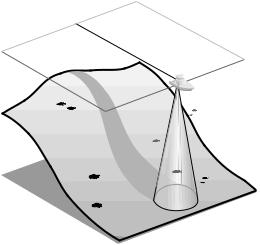Humminbird TFXIDD Owner's Manual

In-Dash
Digital Depth Gauge
operations manual
TFXIDD
Warning! This device should not be used as a navigational aid to prevent collision, grounding, boat damage or personal injury. When the boat is moving, water depth may change too quickly to allow time for you to react. Always operate the boat at very slow speeds if you suspect shallow water or submerged objects.
TABLE OF CONTENTS
Section 1: GENERAL INFORMATION . . . . . . . . . . . . . . . 2
How Sonar Works. . . . . . . . . . . . . . . . . . . . . . . . . 2
Section 2: USING THE DIGITAL DEPTH GAUGE . . . . . . . |
4 |
What you see on-screen . . . . . . . . . . . . . . . . . . . . |
4 |
Control functions . . . . . . . . . . . . . . . . . . . . . . . . . |
4 |
Shallow Alarm . . . . . . . . . . . . . . . . . . . . . . . . . . . |
5 |
Deep Alarm . . . . . . . . . . . . . . . . . . . . . . . . . . . . . |
6 |
Units . . . . . . . . . . . . . . . . . . . . . . . . . . . . . . . . |
7 |
Keel Offset . . . . . . . . . . . . . . . . . . . . . . . . . . . . . |
7 |
Section 3: MAINTENANCE . . . . . . . . . . . . . . . . . . . . . . 9
Maintenance . . . . . . . . . . . . . . . . . . . . . . . . . . . . 9
Troubleshooting . . . . . . . . . . . . . . . . . . . . . . . . . 10
Specifications . . . . . . . . . . . . . . . . . . . . . . . . . . 12
REV 10201E

GENERAL INFORMATION
HOW SONAR WORKS
HOW SONAR WORKS
Sonar uses sound waves to determine the presence and location of underwater objects. The time measured between the transmission of the sound wave, and the reception of any reflection can be used to determine distance.
Analysis of the reflected signal can also be use to determine location, size,
composition, etc.
Digital depth gauges consist of two primary components: the sonar
unit and the transducer. The sonar unit contains the transmitter
and receiver, as
well as the user
controls and display. transducer is mounted water surface and
converts electrical energy from the transmitter into mechanical pulses or sound waves. The transducer also receives the reflected sound waves and converts them back into electrical signals for display on the sonar unit.
2
GENERAL INFORMATION
HOW SONAR WORKS
The transmit and receive cycle is very fast. A sound wave can travel from the surface to a depth of 240' and back again in less than ¹⁄ of a second; so it is unlikely that your boat can “outrun” this sonar signal.
As the digital depth gauge transducer receives sonar signals, it converts them to a digital depth that is displayed on your digital depth gauge. The depth reading is continuously updated as you travel across the water.
Easy-to-use controls on the digital depth gauge allow you to set the SHALLOW ALARM or DEEP ALARM for an audible alert when the boat is in extreme shallow or deep water.
The liquid crystal display (LCD) offers sharp viewing, even in bright direct sunlight, and is continuously lit for nighttime operation.
NOTE: Actual depth capability depends on such factors as bottom hardness, water conditions, and transducer installation. Units will typically read to deeper depths in fresh water than in salt water.
3
